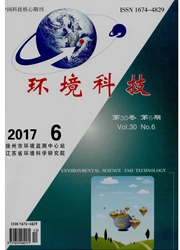

 中文摘要:
中文摘要:
将基于统计学理论的最小二乘支持向量机(LSSVM)方法试用于臭氧浓度时间序列预测。首先利用臭氧浓度时间序列资料重构了该混沌动力系统的相空间,然后沿着系统演化的相轨道用最小二乘支持向量机建立了臭氧浓度短时预测模型,并用上海市淀山湖站的臭氧观测资料做了提前1~8h和提前24h预报试验,结果显示这一模式能够较好地模拟臭氧浓度演化轨迹,提前1~8h的预测精度均超过90%,提前24h预报精度亦都在68%以上,预报效果较好。
 英文摘要:
英文摘要:
An ozone forecasting model applying Least Squares Support Vector Machines which is based on the statistics theory is represented in this paper. First of all, the phase spaces of chaos dynamic systems are reconstructed with surface ozone concentration time series. Then the ozone forecasting model is developed along the physical trajectory in the reconstructed phase space with the Least Squares Support Vector Machines. Prediction experiments are conducted using the surface ozone concentration observations of the site of Dianshanhu in Shanghai in 2004. The results show that this model can properly simulate the surface ozone concentration fluctuations. The 1 - 8 hours ahead prediction accuracies are all above 90% and the 24 hours ahead prediction accuracies are all higher than 68%. Those prediction accuracies are acceptable.
 同期刊论文项目
同期刊论文项目
 同项目期刊论文
同项目期刊论文
 期刊信息
期刊信息
